 W
WAkitsushima (秋津洲) was a protected cruiser of the Imperial Japanese Navy (IJN), designed and built by the Yokosuka Naval Arsenal in Japan. The name Akitsushima comes from an archaic name for Japan, as used in the ancient chronicle Kojiki.
 W
WThe Aoba-class cruisers were a class of two heavy cruisers constructed for the Imperial Japanese Navy (IJN) which saw service during World War II.
 W
WAzuma (吾妻) was an armored cruiser built for the Imperial Japanese Navy (IJN) in the late 1890s. As Japan lacked the industrial capacity to build such warships herself, the ship was built in France. She participated in most of the naval battles of the Russo-Japanese War of 1904–05 and was lightly damaged during the Battle off Ulsan and the Battle of Tsushima. Azuma began the first of five training cruises in 1912 and saw no combat during World War I. She was never formally reclassified as a training ship although she exclusively served in that role from 1921 until she was disarmed and hulked in 1941. Azuma was badly damaged in an American carrier raid in 1945, and subsequently scrapped in 1946.
 W
WThe cruiser Bayan was the name ship of the four Bayan-class armoured cruisers built for the Imperial Russian Navy in the first decade of the 20th century. The ship had to be built in France because there was no available capacity in Russia. Bayan was assigned to the First Pacific Squadron after completion and based at Port Arthur from the end of 1903. She suffered minor damage during the Battle of Port Arthur at the beginning of the Russo-Japanese War of 1904–05 and supported destroyers as they patrolled outside the harbour. After bombarding Japanese positions in July 1904, the ship struck a mine and was out of action for the next several months. Bayan was sunk during the Siege of Port Arthur and was then salvaged by the Japanese after the war.
 W
WChihaya (千早) was an unprotected cruiser of the Imperial Japanese Navy. The name Chihaya comes from Chihaya Castle, near Osaka, the site of one of the battles of the Genkō War of 1333.
 W
WChishima was an unprotected cruiser of the Imperial Japanese Navy. The name Chishima is the Japanese name for the Kurile Islands. Chishima was used by the Imperial Japanese Navy as an aviso for scouting, reconnaissance and delivery of high priority messages.
 W
WChiyoda (千代田) was a cruiser of the Imperial Japanese Navy, which served in the First Sino-Japanese War, Russo-Japanese War and World War I.
 W
WThe Chilean cruiser Esmeralda was the first protected cruiser, a ship type named for the arched armored deck that protected its most vital areas, including its propulsion plant and magazines.
 W
WThe Furutaka-class cruisers were a class of two heavy cruisers which saw service with the Imperial Japanese Navy during World War II. Both vessels of this class were sunk in 1942.
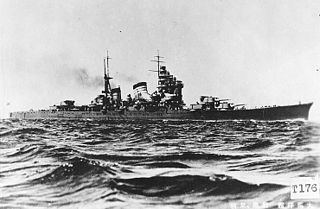 W
WHaguro (羽黒) was a Myōkō-class heavy cruiser of the Imperial Japanese Navy, named after Mount Haguro in Yamagata Prefecture. Commissioned in 1929, Haguro saw significant service during World War II, participating in nine naval engagements. She was sunk in 1945 during a fight with Royal Navy destroyers, one of the last major Japanese warships to be sunk in open waters during World War II.
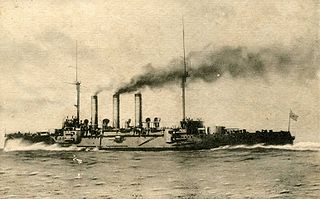 W
WThe Izumo-class cruisers were a pair of armored cruisers built for the Imperial Japanese Navy (IJN) in the late 1890s. As Japan lacked the industrial capacity to build such warships herself, the vessels were built in Britain. They were part of the "Six-Six Fleet" expansion program that began after the defeat of China during the First Sino-Japanese War of 1894–1895. The sister ships participated in three of the four main naval battles of the Russo-Japanese War of 1904–1905—the Battle of Port Arthur, the Battle off Ulsan and the Battle of Tsushima—but played a much more minor role in World War I.
 W
WJiyuan, was a protected cruiser of the Imperial Chinese Navy, assigned to the Beiyang Fleet. She was constructed in Germany as China lacked the industrial facilities needed to build them at the time. Jiyuan was originally intended to be the third ironclad battleship of the Dingyuan class, but was reduced in size due to funding issues. Upon completion, she was prevented from sailing to China during the Sino-French War.
 W
WKatori (香取) was the lead ship of the Katori class of three light cruisers which served with the Imperial Japanese Navy during World War II. The ship was named after the noted Shinto Katori Shrine in Chiba prefecture, Japan.
 W
WMiyako (宮古) was an unprotected cruiser of the early Imperial Japanese Navy. The name Miyako comes from the Miyako Islands, one of the three island groups making up current Okinawa prefecture. Miyako was used by the Imperial Japanese Navy primarily as an aviso for scouting, reconnaissance and delivery of high priority messages.
 W
WThe Mogami class (最上型) were four cruisers built for the Imperial Japanese Navy (IJN) during the 1930s. They were initially classified as light cruisers under the weight and armament restrictions of the London Naval Treaty. After Japan refused to comply any longer with that agreement, all four ships were rearmed with larger guns and were reclassified as heavy cruisers. All four sisters participated in World War II and were sunk.
 W
WThe Myōkō-class cruisers were a series of four heavy cruisers built for the Imperial Japanese Navy in the late 1920s. Three were lost during World War II.
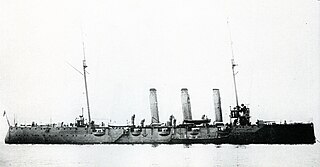 W
WOtowa (音羽) was a protected cruiser of the Imperial Japanese Navy, designed and built by the Yokosuka Naval Arsenal in Japan. The name Otowa comes from a mountain in Kyoto, located behind Kiyomizu-dera. The waters from a waterfall at this temple were traditionally held to be a cure for all illnesses.
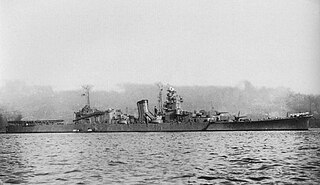 W
WŌyodo (大淀) was a light cruiser built for the Imperial Japanese Navy (IJN) during World War II, and was the only ship of her class completed before the end of the war. Designed to command submarine operations, she was obsolete upon completion in 1943. The ship was used as a transport and to escort the navy's capital ships for the rest of the year. Ōyodo was lightly damaged by American aircraft in early January 1944 during one transport mission and returned home several months later to begin conversion to serve as the flagship of the Combined Fleet.
 W
WSoya (宗谷) was a protected cruiser in the Imperial Japanese Navy, acquired as a prize of war during the Russo-Japanese War from the Imperial Russian Navy, where it had been known as Varyag.
 W
WNovík was a protected cruiser in the Imperial Russian Navy, built by Schichau shipyards in Elbing near Danzig, Germany.
 W
WTakao (高雄) was an unprotected cruiser of the Imperial Japanese Navy. The name Takao comes from the Mount Takao, near Kyoto. Takao was used by the Imperial Japanese Navy primarily as an aviso or dispatch boat, for scouting, reconnaissance and the conveying of important messages.
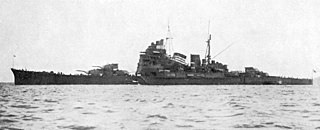 W
WThe Takao-class cruiser (高雄型) was a class of four heavy cruisers of the Imperial Japanese Navy (IJN) launched between May 1930 and April 1931. They all served during World War II.
 W
WTakasago was a protected cruiser of the Imperial Japanese Navy, designed and built by the Armstrong Whitworth shipyards in Elswick, in the United Kingdom. The name Takasago derives from a location in Hyōgo Prefecture, near Kobe.
 W
WTatsuta (龍田) was an unprotected cruiser of the Imperial Japanese Navy. The name Tatsuta comes from the Tatsuta River, near Nara. Tatsuta was used by the Imperial Japanese Navy primarily as an aviso used for scouting, reconnaissance and delivery of priority messages.
 W
WTone was a protected cruiser of the Imperial Japanese Navy. The ship was named after the Tone River in Tokyo.
 W
WTsugaru (津軽) was a protected cruiser of the Imperial Japanese Navy, acquired as a prize of war during the Russo-Japanese War from the Imperial Russian Navy, where it was originally known as Pallada. The cruisers Aurora and Diana were her sister ships.
 W
WTsukushi (筑紫) was an early unprotected cruiser, serving in the fledgling Imperial Japanese Navy. Its name is a traditional name for Kyūshū island. Its sister ships Chaoyong and Yangwei were acquired by the Chinese Beiyang Fleet.
 W
WUnebi (畝傍) was a protected cruiser built in France for the Imperial Japanese Navy (IJN) by Forges et Chantiers de la Gironde during the 1880s as the Japanese was not yet able to build warships of her size in Japan. Completed in 1886, the ship disappeared somewhere between Singapore and Japan on her delivery voyage with the loss of all hands.
 W
WYaeyama (八重山) was an unprotected cruiser of the Imperial Japanese Navy. The name Yaeyama comes from the Yaeyama Islands, the southernmost of the three island groups making up current Okinawa prefecture. Yaeyama was used by the Imperial Japanese Navy primarily as an aviso for scouting, reconnaissance and delivery of high priority messages.
 W
WYakumo was an armored cruiser built for the Imperial Japanese Navy (IJN) in the late 1890s. As Japan lacked the industrial capacity to build such warships herself, the ship was built in Germany. She participated in most of the naval battles of the Russo-Japanese War of 1904–05, and was lightly damaged during the Battle of the Yellow Sea and the Battle of Tsushima. Yakumo saw no combat during World War I and began the first of many training cruises in 1917, although she was not officially reclassified as a training ship until 1931. Her last training cruise was in 1939, but the ship continued to conduct training in home waters throughout the Pacific War. Yakumo became a repatriation transport after the war and was broken up in 1946–47.
 W
WYoshino (吉野) was a protected cruiser of the Imperial Japanese Navy. Yoshino is sometimes regarded as a sister ship to Takasago, although the two vessels are of different classes. The name Yoshino comes from the Yoshino mountains, located in the southern portion of Nara prefecture. She played an important role in the First Sino-Japanese War, but was sunk in the Russo-Japanese War after being rammed by Japanese armored cruiser Kasuga in dense fog.
 W
WYūbari (夕張) was an experimental light cruiser built between 1922 and 1923 for the Imperial Japanese Navy (IJN). Although a test bed for various new designs and technologies, she was commissioned as a front-line warship and participated in numerous combat operations during World War II before she was sunk by the U.S. Navy. Designs pioneered on Yūbari had a major impact on future Japanese warship designs.